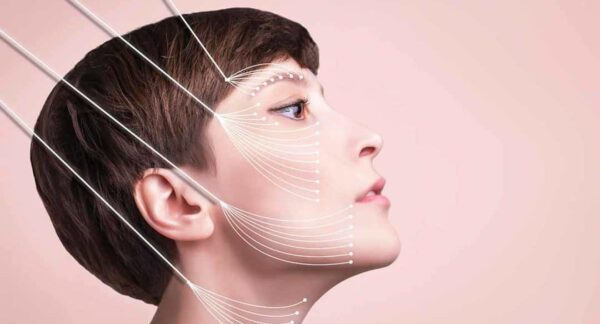

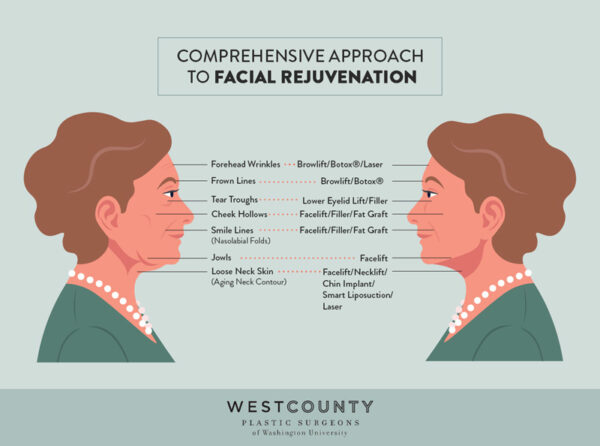
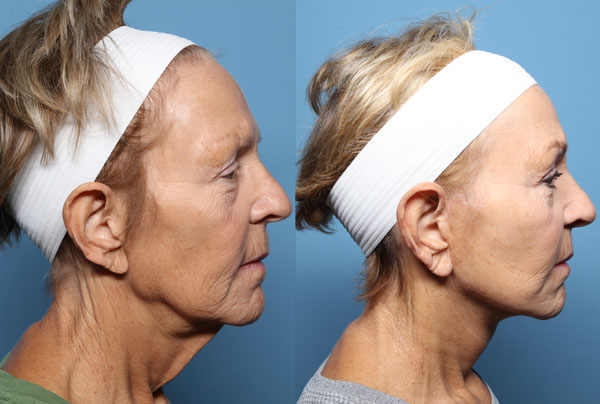
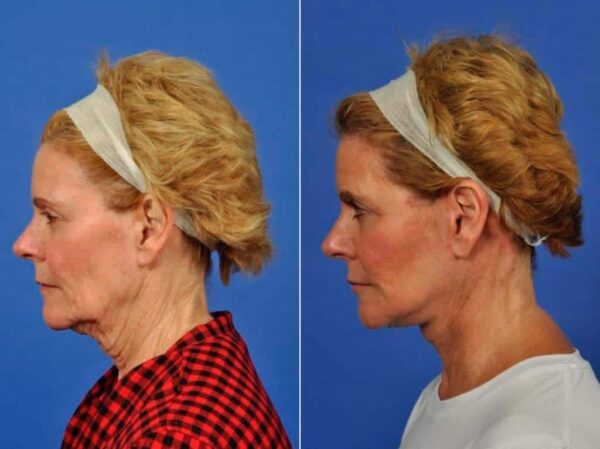



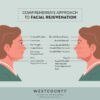
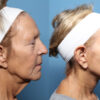



Free
Embark on a transformative journey with our exceptional range of medical treatments. As a leading medical tour operator, we offer a comprehensive selection of world-class treatments and procedures to address your unique healthcare needs. From advanced surgeries to cutting-edge therapies, our team of experienced professionals is dedicated to providing top-notch care and ensuring your comfort and satisfaction. Discover a new level of healthcare excellence with our tailored treatment options. Book now to start your journey towards a healthier and happier you.
A traditional facelift, also known as a rhytidectomy, is a surgical procedure aimed at improving visible signs of aging in the face and neck. Here is a general explanation of the procedure based on the search results:
Anesthesia: The procedure begins with the administration of anesthesia to ensure your comfort during the surgery. The options include intravenous sedation or general anesthesia, and your surgeon will recommend the best choice for you.
Incision: The incision pattern for a traditional facelift may vary depending on the desired outcome and the surgeon’s technique. Typically, the incision starts in the hairline at the temples, continues around the ear, and may extend into the hair-bearing scalp behind the ear. The size and placement of the incisions will be discussed with you before the surgery.
Tissue Repositioning: After making the incisions, the surgeon will lift and reposition the underlying tissues, including the muscles and fat, to address sagging and restore a more youthful contour to the face. This step involves tightening the underlying structures and removing excess fat if necessary.
Skin Redraping: Once the underlying tissues are repositioned, the surgeon will redrape the skin over the newly contoured facial structures. Excess skin may be trimmed or removed to achieve a smoother and more youthful appearance.
Closure: The incisions are then closed with sutures or other closure techniques. Your surgeon may use techniques to minimize visible scarring, such as placing the incisions in natural creases or using dissolvable sutures.
Based on the search results, a traditional facelift is generally considered suitable for the following individuals:
Significant Signs of Aging: Traditional facelifts are often recommended for individuals who have significant signs of aging, such as sagging skin, deep wrinkles, and jowls. This procedure can address multiple areas of the face and neck to provide a more comprehensive rejuvenation.
Good Skin Elasticity: Candidates for a traditional facelift typically have good skin elasticity, which allows for optimal results. This means that the skin has some degree of firmness and can adapt well to the repositioning and tightening performed during the surgery.
Realistic Expectations: It is important to have realistic expectations about the outcomes of a traditional facelift. While the procedure can provide significant improvements, it may not completely eliminate all signs of aging or drastically change your appearance. Discussing your goals and expectations with a qualified plastic surgeon is crucial to ensure that a traditional facelift is the right choice for you.
Good Overall Health: Candidates for a traditional facelift should be in good overall health and free from any medical conditions that may increase the risks associated with surgery. A thorough medical evaluation will be conducted to assess your suitability for the procedure.
Age Range: While there is no specific age limit for a traditional facelift, it is commonly performed on individuals in their 40s to 60s. However, age alone is not the sole determining factor, and suitability for the procedure is assessed on an individual basis.
Based on the search results, a traditional facelift may not be suitable for the following individuals:
Minimal Signs of Aging: If you have minimal signs of aging, such as fine lines or shallow wrinkles, a traditional facelift may not be necessary. Less invasive procedures, such as non-surgical treatments like fillers or injectables, may be more appropriate for addressing these early signs of aging.
Poor Skin Elasticity: Candidates for a traditional facelift typically have good skin elasticity, which allows for optimal results. If you have poor skin elasticity, such as very loose or thin skin, a traditional facelift may not provide the desired outcome. Your plastic surgeon can assess your skin quality and recommend alternative procedures that may be more suitable for you.
Medical Conditions and Health Concerns: Certain medical conditions or health concerns may make a traditional facelift unsuitable. It is important to discuss your medical history with your plastic surgeon to determine if you are a suitable candidate for the procedure. Your surgeon will consider factors such as your overall health, any underlying medical conditions, and any medications you are taking.
Desire for Less Invasive Options: If you prefer less invasive procedures or are not ready for surgery, there are alternative options available. Non-surgical treatments, such as dermal fillers, Botox, or thread lifts, may be suitable for addressing specific concerns without the need for a traditional facelift.
The advantages of a traditional facelift, based on the search results, include:
Comprehensive Facial Rejuvenation: A traditional facelift can address multiple areas of the face and neck, providing a more comprehensive rejuvenation compared to less invasive procedures. It can effectively address sagging skin, deep wrinkles, jowls, and excess fat in the mid to lower face.
Long-Lasting Results: A traditional facelift is a surgical procedure that involves repositioning and tightening the underlying tissues and muscles. This can result in longer-lasting results compared to non-surgical treatments, which may require more frequent maintenance sessions.
Improved Facial Contours: By lifting and repositioning the underlying tissues, a traditional facelift can restore a more youthful and refreshed appearance to the face. It can help improve facial contours, including the cheeks, jawline, and neck, providing a more defined and balanced facial profile.
Customizable Approach: A traditional facelift can be tailored to address specific concerns and meet individual goals. The procedure can be customized based on factors such as the patient’s anatomy, desired outcomes, and the surgeon’s expertise, ensuring a personalized approach to facial rejuvenation.
Durable and Dramatic Results: The surgical nature of a traditional facelift allows for more significant changes in the appearance of the face. It can provide a more dramatic transformation compared to non-surgical options, making it suitable for individuals who desire a more noticeable improvement in their facial appearance.
Complications associated with a traditional facelift, as mentioned in the search results, may include:
Hematoma: Hematoma, which is the collection of blood under the skin, is one of the most common complications following a facelift. It can occur in approximately 1-5% of procedures. Prompt attention and management by the surgeon are necessary to address this complication 1.
Infection: Infections can occur after a facelift, although they are relatively rare. Proper surgical techniques, sterile conditions, and postoperative care can help minimize the risk of infection.
Skin Loss: In rare cases, a facelift can interrupt the blood supply to facial tissues, leading to skin loss. This complication is treated with medications and appropriate wound care. Procedures to reduce scarring may be necessary 2.
Hair Loss: Temporary or permanent hair loss near the incision sites can occur after a facelift. Permanent hair loss can be addressed with surgical procedures, such as hair follicle transplantation 2.
Complications from Anesthesia: As with any surgical procedure, there is a risk of complications related to anesthesia. These can include allergic reactions, grogginess, nausea, or a sore throat. However, these complications are generally rare.
Risk Factors: Certain medical conditions or lifestyle habits can increase the risk of complications associated with a facelift. Factors such as smoking, existing health conditions, and poor overall health may affect the healing process and increase the risk of complications.
Based on the search results, here are some preoperative care instructions that may be recommended for a traditional facelift:
Hair Care: It is advised to wash your hair either the evening before or the morning of the surgery. Avoid using any styling products or sprays on the day of the procedure 1.
Clothing: Wear loose-fitting clothes that fasten in the front or back to ensure comfort and ease of dressing after the surgery. Avoid slipover clothing 1.
Jewelry and Makeup: Leave all valuables, including jewelry, at home. Avoid wearing any facial or eye makeup on the day of the surgery. It is also recommended to avoid nail polish.
Eyewear: You may wear glasses, but contact lenses should be avoided on the day of the surgery 1.
Dentures: If you wear dentures, it is generally advised to keep them in during the surgery 1.
Preparation at Home: To ensure a smooth recovery process, it is recommended to prepare your space ahead of time. This may include meal prepping or purchasing pre-made meals, arranging for someone to take care of other responsibilities such as pet care, having prescription medications nearby, and ensuring that the space you will be staying in is quiet and comfortable 2.
The postoperative care for a traditional facelift typically involves the following:
Incision Care: It is important to follow your surgeon’s instructions for incision care to prevent infection and promote proper healing. This may include keeping the incisions clean, applying antibiotic ointment, and changing dressings as directed.
Pain Management: Some pain and discomfort are expected after a facelift. Your surgeon may prescribe pain medication or recommend over-the-counter pain relievers to manage any discomfort. Follow your surgeon’s instructions regarding pain management.
Swelling and Bruising: Swelling and bruising are common after a facelift. Applying cold compresses or ice packs to the treated areas can help reduce swelling. Your surgeon may also recommend keeping your head elevated while resting to minimize swelling.
Activity Restrictions: It is important to avoid strenuous activities, heavy lifting, and bending over for a certain period of time after the surgery. Your surgeon will provide specific guidelines on when you can gradually resume normal activities and exercise.
Medications: Your surgeon may prescribe antibiotics to prevent infection and may also recommend medications to manage swelling or promote healing. Follow your surgeon’s instructions regarding medication usage.
Follow-up Appointments: Your surgeon will schedule follow-up appointments to monitor your progress and remove any stitches or drains. Attend these appointments as scheduled and communicate any concerns or questions you may have.
Skin Care: Your surgeon may provide specific instructions on how to care for your skin after a facelift. This may include gentle cleansing, avoiding excessive sun exposure, and using recommended skincare products.
Only logged in customers who have purchased this product may leave a review.
A traditional facelift, also known as a rhytidectomy, is a surgical procedure aimed at improving visible signs of aging in the face and neck. Here is a general explanation of the procedure based on the search results:
Anesthesia: The procedure begins with the administration of anesthesia to ensure your comfort during the surgery. The options include intravenous sedation or general anesthesia, and your surgeon will recommend the best choice for you.
Incision: The incision pattern for a traditional facelift may vary depending on the desired outcome and the surgeon’s technique. Typically, the incision starts in the hairline at the temples, continues around the ear, and may extend into the hair-bearing scalp behind the ear. The size and placement of the incisions will be discussed with you before the surgery.
Tissue Repositioning: After making the incisions, the surgeon will lift and reposition the underlying tissues, including the muscles and fat, to address sagging and restore a more youthful contour to the face. This step involves tightening the underlying structures and removing excess fat if necessary.
Skin Redraping: Once the underlying tissues are repositioned, the surgeon will redrape the skin over the newly contoured facial structures. Excess skin may be trimmed or removed to achieve a smoother and more youthful appearance.
Closure: The incisions are then closed with sutures or other closure techniques. Your surgeon may use techniques to minimize visible scarring, such as placing the incisions in natural creases or using dissolvable sutures.
Based on the search results, a traditional facelift is generally considered suitable for the following individuals:
Significant Signs of Aging: Traditional facelifts are often recommended for individuals who have significant signs of aging, such as sagging skin, deep wrinkles, and jowls. This procedure can address multiple areas of the face and neck to provide a more comprehensive rejuvenation.
Good Skin Elasticity: Candidates for a traditional facelift typically have good skin elasticity, which allows for optimal results. This means that the skin has some degree of firmness and can adapt well to the repositioning and tightening performed during the surgery.
Realistic Expectations: It is important to have realistic expectations about the outcomes of a traditional facelift. While the procedure can provide significant improvements, it may not completely eliminate all signs of aging or drastically change your appearance. Discussing your goals and expectations with a qualified plastic surgeon is crucial to ensure that a traditional facelift is the right choice for you.
Good Overall Health: Candidates for a traditional facelift should be in good overall health and free from any medical conditions that may increase the risks associated with surgery. A thorough medical evaluation will be conducted to assess your suitability for the procedure.
Age Range: While there is no specific age limit for a traditional facelift, it is commonly performed on individuals in their 40s to 60s. However, age alone is not the sole determining factor, and suitability for the procedure is assessed on an individual basis.
Based on the search results, a traditional facelift may not be suitable for the following individuals:
Minimal Signs of Aging: If you have minimal signs of aging, such as fine lines or shallow wrinkles, a traditional facelift may not be necessary. Less invasive procedures, such as non-surgical treatments like fillers or injectables, may be more appropriate for addressing these early signs of aging.
Poor Skin Elasticity: Candidates for a traditional facelift typically have good skin elasticity, which allows for optimal results. If you have poor skin elasticity, such as very loose or thin skin, a traditional facelift may not provide the desired outcome. Your plastic surgeon can assess your skin quality and recommend alternative procedures that may be more suitable for you.
Medical Conditions and Health Concerns: Certain medical conditions or health concerns may make a traditional facelift unsuitable. It is important to discuss your medical history with your plastic surgeon to determine if you are a suitable candidate for the procedure. Your surgeon will consider factors such as your overall health, any underlying medical conditions, and any medications you are taking.
Desire for Less Invasive Options: If you prefer less invasive procedures or are not ready for surgery, there are alternative options available. Non-surgical treatments, such as dermal fillers, Botox, or thread lifts, may be suitable for addressing specific concerns without the need for a traditional facelift.
The advantages of a traditional facelift, based on the search results, include:
Comprehensive Facial Rejuvenation: A traditional facelift can address multiple areas of the face and neck, providing a more comprehensive rejuvenation compared to less invasive procedures. It can effectively address sagging skin, deep wrinkles, jowls, and excess fat in the mid to lower face.
Long-Lasting Results: A traditional facelift is a surgical procedure that involves repositioning and tightening the underlying tissues and muscles. This can result in longer-lasting results compared to non-surgical treatments, which may require more frequent maintenance sessions.
Improved Facial Contours: By lifting and repositioning the underlying tissues, a traditional facelift can restore a more youthful and refreshed appearance to the face. It can help improve facial contours, including the cheeks, jawline, and neck, providing a more defined and balanced facial profile.
Customizable Approach: A traditional facelift can be tailored to address specific concerns and meet individual goals. The procedure can be customized based on factors such as the patient’s anatomy, desired outcomes, and the surgeon’s expertise, ensuring a personalized approach to facial rejuvenation.
Durable and Dramatic Results: The surgical nature of a traditional facelift allows for more significant changes in the appearance of the face. It can provide a more dramatic transformation compared to non-surgical options, making it suitable for individuals who desire a more noticeable improvement in their facial appearance.
Complications associated with a traditional facelift, as mentioned in the search results, may include:
Hematoma: Hematoma, which is the collection of blood under the skin, is one of the most common complications following a facelift. It can occur in approximately 1-5% of procedures. Prompt attention and management by the surgeon are necessary to address this complication 1.
Infection: Infections can occur after a facelift, although they are relatively rare. Proper surgical techniques, sterile conditions, and postoperative care can help minimize the risk of infection.
Skin Loss: In rare cases, a facelift can interrupt the blood supply to facial tissues, leading to skin loss. This complication is treated with medications and appropriate wound care. Procedures to reduce scarring may be necessary 2.
Hair Loss: Temporary or permanent hair loss near the incision sites can occur after a facelift. Permanent hair loss can be addressed with surgical procedures, such as hair follicle transplantation 2.
Complications from Anesthesia: As with any surgical procedure, there is a risk of complications related to anesthesia. These can include allergic reactions, grogginess, nausea, or a sore throat. However, these complications are generally rare.
Risk Factors: Certain medical conditions or lifestyle habits can increase the risk of complications associated with a facelift. Factors such as smoking, existing health conditions, and poor overall health may affect the healing process and increase the risk of complications.
Based on the search results, here are some preoperative care instructions that may be recommended for a traditional facelift:
Hair Care: It is advised to wash your hair either the evening before or the morning of the surgery. Avoid using any styling products or sprays on the day of the procedure 1.
Clothing: Wear loose-fitting clothes that fasten in the front or back to ensure comfort and ease of dressing after the surgery. Avoid slipover clothing 1.
Jewelry and Makeup: Leave all valuables, including jewelry, at home. Avoid wearing any facial or eye makeup on the day of the surgery. It is also recommended to avoid nail polish.
Eyewear: You may wear glasses, but contact lenses should be avoided on the day of the surgery 1.
Dentures: If you wear dentures, it is generally advised to keep them in during the surgery 1.
Preparation at Home: To ensure a smooth recovery process, it is recommended to prepare your space ahead of time. This may include meal prepping or purchasing pre-made meals, arranging for someone to take care of other responsibilities such as pet care, having prescription medications nearby, and ensuring that the space you will be staying in is quiet and comfortable 2.
The postoperative care for a traditional facelift typically involves the following:
Incision Care: It is important to follow your surgeon’s instructions for incision care to prevent infection and promote proper healing. This may include keeping the incisions clean, applying antibiotic ointment, and changing dressings as directed.
Pain Management: Some pain and discomfort are expected after a facelift. Your surgeon may prescribe pain medication or recommend over-the-counter pain relievers to manage any discomfort. Follow your surgeon’s instructions regarding pain management.
Swelling and Bruising: Swelling and bruising are common after a facelift. Applying cold compresses or ice packs to the treated areas can help reduce swelling. Your surgeon may also recommend keeping your head elevated while resting to minimize swelling.
Activity Restrictions: It is important to avoid strenuous activities, heavy lifting, and bending over for a certain period of time after the surgery. Your surgeon will provide specific guidelines on when you can gradually resume normal activities and exercise.
Medications: Your surgeon may prescribe antibiotics to prevent infection and may also recommend medications to manage swelling or promote healing. Follow your surgeon’s instructions regarding medication usage.
Follow-up Appointments: Your surgeon will schedule follow-up appointments to monitor your progress and remove any stitches or drains. Attend these appointments as scheduled and communicate any concerns or questions you may have.
Skin Care: Your surgeon may provide specific instructions on how to care for your skin after a facelift. This may include gentle cleansing, avoiding excessive sun exposure, and using recommended skincare products.
There are no reviews yet.
Only logged in customers who have purchased this product may leave a review.
Choosing the right hospital and physician are important factors to consider that significantly influence a patient’s treatment. The preferred choice for many patients is choosing private care.
Choosing the right hospital and physician are important factors to consider that significantly influence a patient’s treatment.
Reviews
There are no reviews yet.